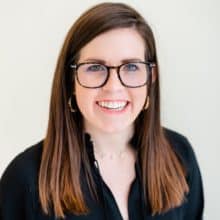

The first step in the “pinch points to possibilities” webinar series on authentic innovation, hosted by Ben Owens and Dominique Stone, was to listen.
In addition to launching a Reach survey that poses questions such as, “Name three ways that your school and community could be more deeply connected,” Owens hosted a design sprint with 25 students, teachers, and parents on June 4.
Owens, co-founder of the nonprofit Open Way Learning, which helps schools build cultures of true innovation, explained that in the design sprint process, the first step is to create an empathy map.
Owens and Stone, in collaboration with EdNC, have invited educators and students who were a part of the design sprint to be featured in our first event in this series, which will be a collaborative discussion about the empathy mapping process. The goal of the conversation will be for a broader audience to learn about this tool so they can bring it to their communities.
Sign up for the “pinch points to possibilities” webinar on June 11 from 4-5 p.m.


According to the Nielson Normal Group, an empathy map is “a collaborative visualization used to articulate what we know about a particular type of user. It externalizes knowledge about users in order to 1) create a shared understanding of user needs, and 2) aid in decision making.”
Visually, the user is at the center, with four quadrants that represent the user is as a whole. In this case, there are two users: Parents and students in North Carolina.


When someone works on an empathy map in person, a template with the label “user” in the middle and quadrants for “say, think, do, and feel” can be created on a whiteboard or large sticky pad. Sticky notes can be used throughout the process.
To create an empathy map digitally, we used a tool called Mural, an online workspace for visual collaboration (which is free to use for educators during COVID-19).
The first part of the process was to use Mural to write virtual sticky notes for each quadrant, keeping a focus on the user by putting yourself in their shoes. Circles were used for students, and squares for parents. The question in this case was, “What are students and parents in North Carolina saying, thinking, doing and feeling right now?”


Next, to define problem statements (the next part of a design sprint), the virtual sticky notes were organized based on category. For example, many of the reflections could be in the same category, such as “safety,” “busywork,” “supporting kids,” etc. Digitally, we did this by moving the segments together that were similar, and making a title for them. In person, you would move sticky notes together and collaboratively label them.


Aria Chernik, founder and director of Open Source Pedagogy, Research + Innovation (OSPRI) at Duke University, co-led the empathy mapping process and helped the group collaboratively decide on defining a problem. Equity and access, student voice, and social-emotional health were selected as the most urgent issues for students and teachers based on the empathy mapping process.
During the first event in the series on June 11, panelists will reflect on creating an empathy maps and work toward defining a problem statement based on those urgent issues.
“This session will dig into these pain points with a panel of education stakeholders that are witnessing them firsthand,” Owens said in the session description. “It will be a discussion that is informed by survey results from parents and students and will use empathy mapping to develop a draft problem statement (or statements) in terms of these voices from across the state.”
Featured panelists:
- Adam Haigler, biology and environmental science teacher, Tri-County Early College, Cherokee County Schools
- Andrew Harris, chief executive officer, Northeast Academy for Aerospace and Advanced Technologies
- Alicia Hash, principal, Cotswold Elementary, Charlotte-Mecklenburg Schools
- Aria F. Chernik, founder and director, Open Source Pedagogy, Research + Innovation (OSPRI), Duke University
- David Kirkland, principal, Cape Fear Elementary School, Pender County Schools
- Dayson Paison, equity specialist, Chapel Hill-Carrboro City Schools
- Kayce Smith, academic and behavior success coordinator/coach (MTSS), Myrtle Grove Middle School, New Hanover County Schools
- Kiersten Hash, rising senior, Mallard Creek High School, Charlotte-Mecklenburg Schools
- Rose Castro-Serrato, rising ninth-grader, Myrtle Grove Middle School, New Hanover County Schools



